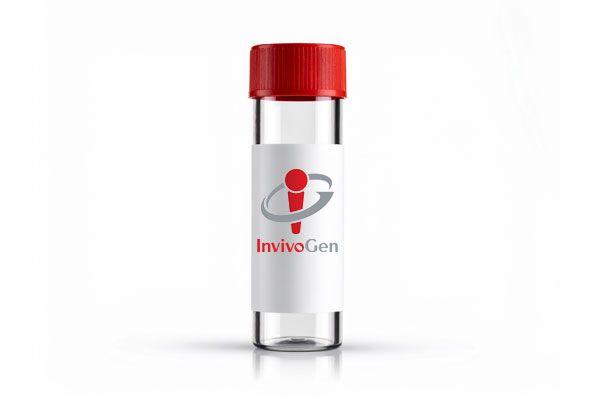
pUNO1-hRIPK2
-
Cat.code:
puno1-hrick
- Documents
Expression-ready ORF Clones
Alias : RICK, CARD3, RIP2, CARDIAK
Receptor interacting serine/threonine kinase 2.
Caspase recruitment domain-containing protein 3.
Receptor-interacting protein 2 (RIP2), also known as RICK, Rip2, CARDIAK and CARD3, is a serine/threonine kinase characterized by a C-terminal caspase activation and recruitment domain (CARD). Beside caspase activation, RIP2 is implicated in NF-kB activation. It acts as a signal transducer for pattern-recognition receptors, including TLRs and NODs [1-4]. RIP2 is recruited to certain TLR-signaling complexes after ligand stimulation promoting the activation of NF-kB and the production of proinflammatory cytokines. Furthermore, RIP2 is required for optimal TCR signalling and T-cell differentiation [1]. Thus RIP2 is an essential mediator for both the innate and adaptive immune responses.
References:
1. Kobayashi K. et al., 2002. RICK/Rip2/CARDIAK mediates signalling for receptors of the innate and adaptive immune systems. Nature 416(6877):194-9.
2. Chin AI. et al., 2002. Involvement of receptor-interacting protein 2 in innate and adaptive immune responses. Nature 416(6877):190-4.
3. Pauleau AL. & Murray PJ., 2003. Role of nod2 in the response of macrophages to toll-like receptor agonists. Mol Cell Biol. 23(21):7531-9.
4. Girardin SE. et al., 2001. CARD4/Nod1 mediates NF-kappaB and JNK activation by invasive Shigella flexneri.EMBO Rep.2(8):736-42.
Specifications
Human RIPK2 (pUNO1-hRIPK2)
Genbank : NM_003821.5ORF size : 1623 bp
Subclone : AgeI - NheI
Mouse RIPK2 (pUNO1-mRIPK2)
Genbank : NM_138952.3ORF size : 1620 bp
Subclone : AgeI - NheI
Contents
- 20 µg of lyophilized DNA
- 2 x 1 ml blasticidin at 10 mg/ml
![]() Product is shipped at room temperature.
Product is shipped at room temperature.
![]() Lyophilized DNA should be stored at -20°C. Upon receipt, store blasticidin at 4°C or -20°C.
Lyophilized DNA should be stored at -20°C. Upon receipt, store blasticidin at 4°C or -20°C.
![]() Resuspended DNA should be stored at -20°C and is stable for up to 1 year.
Resuspended DNA should be stored at -20°C and is stable for up to 1 year.
![]() Blasticidin is a harmful compound. Refer to the safety data sheet for handling instructions.
Blasticidin is a harmful compound. Refer to the safety data sheet for handling instructions.
DOCUMENTS
Documents
Technical Data Sheet
Safety Data Sheet
Plasmid Map and Sequence
Plasmid Sequence
Certificate of analysis
Need a CoA ?